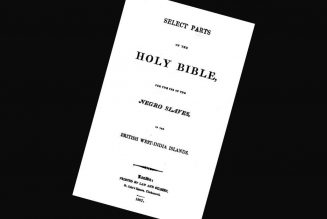
Many skeptics today will say the Bible is not reliable. In most cases when skeptics use the term reliable, they mean trustworthy or accurate. They wonder:
Is the Bible historically accurate? Do we have the correct books in the Bible today? Hasn’t the Bible been changed by men over time?
As Christians, we believe the ultimate authority is the word of God. The Bible tells us that the Holy Spirit will lead us in all truth (John 16:13). It also affirms that God will preserve his Word, meaning his Word will supernaturally be kept pure (Psalm 12:6-7).
There are many things Christians can research, both in God’s word and externally, to build a good case for the reliability of the Bible. Namely, canonization of the Bible, historical accuracy of the Bible, Messianic prophecies, and New Testament manuscripts.
Canonization of the Bible
One of the most important issues when it comes to the Bible is the number of books. Protestant Bibles contain 66 books. Whereas, Catholic Bibles hold 73 books, the Ethiopic Bible has 83. Who is correct? As Christians, we know the voice of God by the power and guidance of the Holy Spirit.
The issue of Canon, meaning: an authoritative list of books accepted as Holy Scripture, can be broken down into three categories:
The first is Community Determined (Roman Catholic Model), the second is Historically Determined (A Historical Investigation Exclusively), and third as Self Authenticating (Studying the content within the Bible).
The Self Authenticating Model, as Michael Kruger professor of New Testament at Reformed Theological Seminary calls it, should be the model Christians follow. It leaves no neutral ground for the skeptic and sets Jesus and his Word as the authority.
There are three questions we can ask when it comes to recognizing which books should be biblical canon.
1.) Apostolic Origin:
Was this book written by an apostle or an associate of an apostle?
When we review the list of books, can we connect any of the authors to the original apostles in the first century? This is important because it gives weight and trust to the book in question. If we have a book with an unknown writer, it should lead us to investigate this text a little more.
2.) Corporate Reception:
Was the early church receptive to this book in the 1st century?
If the book in question was rotating among the early church and accepted as the Word of God, it can be trusted. Origen, an early church father, produced a list of books in the New Testament by 250 A.D.
3.) Cross Reference:
Do these books agree with each other and with God’s voice?
This is important because if a book agrees with another book, we are able to see unity in Scripture. Many books found in the Catholic Bible contain historical errors and contradictions. This is important to note because God does not contradict himself (Numbers 23:19).
We don’t pick and choose which books belong in the Bible; we recognize the voice of God by the power of the Holy Spirit. We look at the content within these books and build a reasonable case. We also ask important questions and allow God to lead us in the path of truth.
Historical Accuracy of the Bible
The Bible describes events and places throughout thousands of years of history. Many of these places and events are verified from Archaeology. Archaeology cannot prove if the Bible is the inspired word of God, but it can show us if things found in the Bible are true or false. By excavating biblical sites, archaeologists have proven many facts claimed in the word of God.
Example 1: Lysanias
Critics had a problem with Luke 3:1 where it speaks of “Lysanias” as being the governor/ruler of Abilene during the time of John the Baptist. This was counted as an “error” in the Bible until an inscription was found with the name “Lysanias” as a ruler in Abilene. This discovery introduced the theory of two rulers with the same name – one about 50 years prior to the one mentioned in Luke 13.
Example 2:The Hittites
Critics have claimed the Hittites (Genesis 15:20, Exodus 3:8, Joshua 1:4) were mythical people. But by the end of the 19th century, monuments were discovered by William Wright proving that these people did exist. The Bible was right once again.
Example 3: Pontius Pilate
Many scholars began to doubt the existence of Pontius Pilate throughout history. That all changed in 1961 when a piece of limestone stone was discovered that had inscribed the name “Pontius Pilate.” An Italian archaeologist, Dr. Antonio Frova, came across this discovery while excavating an ancient Roman theatre in Caesarea, Israel. In 2018, archaeologists also identified “a 2,000-year-old copper alloy ring bearing his name,” according to this New York Times article.
Example 4: Isaiah and the Dead Sea Scrolls
The Dead Sea Scrolls was one of the greatest discoveries in modern times. Before this 1947 discovery, many skeptics questioned the copies of Isaiah in the Old Testament. Skeptics said the book had been changed and revised by men throughout the centuries. It wasn’t until scholars dated the Great Isaiah Scroll (one of the original seven Dead Sea Scrolls found in 1947 in the caves of Qumran), that they discovered the book of Isaiah’s amazing accuracy. The Dead Sea Scrolls copy of Isaiah dates 1,000 years prior to the copy previously possessed.
Messianic Prophecies
Many religions have books that claim to be the truth, but only the Bible contains verified prophecies. Fulfilled prophecy is solid evidence that God is the divine author of The Bible.
Isaiah 7:14 says, “Therefore the Lord himself will give you a sign: The virgin will be with child and will give birth to a son, and will call him Immanuel.” Centuries later, we read in Matthew 1:18,25 that Mary was indeed a virgin, yet she delivered Jesus into this world.
Not only was this child prophesied to be born from a virgin, but he was to come from Bethlehem, according to Micah 5:2. In Matthew 2:1 we discover that this exact prophecy happened, Jesus was born in Bethlehem.
The crucifixion was a major event in history, but is this a prophecy? Yes. In John 19:23-24 we get a picture of how Jesus was crucified: soldiers cast lots for his garments and pierced his hands. We see the same language and detail prophesied in Psalms 22 many centuries before the historical event.
New Testament Manuscripts
Critics always look for new ways to attack the New Testament and its reliability. Many say it’s not reliable as a historical document despite having over 5,600 Greek copies in possession today, which is more than we have of the work of Homer, Plato, Lucretius, and Aristotle.
In addition to this, the New Testament is about 99.5% textually pure. This means the variants are grammatical and minor that occurred in copy over time, but there has been no change in teaching or doctrine. This should give us confidence that we follow true teachings passed down by Jesus and the Apostles.
As Christians, we must believe the word of God and trust in God’s Spirit of truth to “guide you into all the truth” (John 16:13). Our foundation must start with this truth in mind. If we root our ultimate authority in history or external data, it can change or put us on shaky ground with a skeptic because it goes through human hands to determine what is reliable and what is not. As Christians, we must believe the ultimate authority is the word of God.
This article is adapted from the author’s free video series, “Is The Bible Really Complete?”
Edward Antonio is the Founder of Elevating Your Life and a student of theology and church history. He lives in Orange County, CA and is part of Harvest Christian Fellowship. Find him on Instagram at: https://www.instagram.com/mredwardantonio/ or answering Bible questions at: https://elevatingyourlife.org/.
Photo Credit: GettyImages/Userc0373230_9









